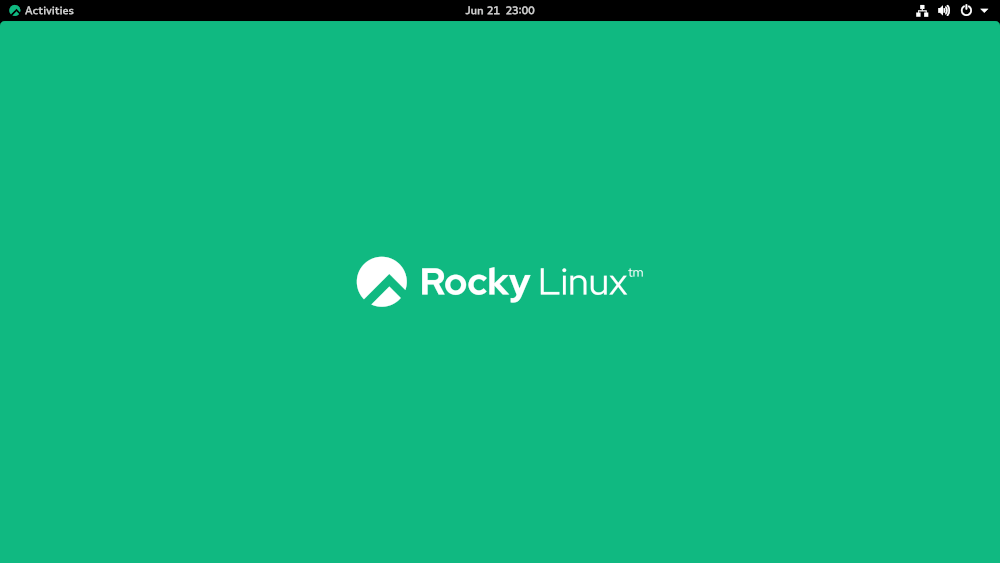Developed by Rocky Enterprise Software Foundation, Rocky Linux is an opensource Linux distribution that was designed to be a downstream and 100% bug-for-bug compatible with Red Hat Enterprise Linux.
Rocky Linux is a community-supported, and production-grade operating system designed to offer rock-solid stability and regular security updates for production workloads. It has increasingly gained traction since its inception and now sits with the big boys such as SUSE Linux Enterprise and Red Hat Enterprise Linux.
Let us take a trip down memory lane and see how one of the most celebrated enterprise-grade Linux distributions came to be.

History of Rocky Linux
The genesis of Rocky Linux began following the grim announcement by Red Hat on December 8 2020 about the discontinuation of the CentOS Project by Red Hat in favor of CentOS Stream which is a rolling release of Red Hat. CentOS Linux would reach End Of Life on December 31st, 2021, and CentOS Stream would be the upstream branch of RHEL.
This announcement threw the Linux community into panic and upset many users, especially those who depended on it for their production workloads. And for good reasons. CentOS Linux was a rebuild of RHEL and was renowned for its security and stability in supporting enterprise workloads at absolutely no cost while still enjoying stable packages, updates, bug fixes, and other goodies from RHEL. It was a no-cost RHEL distribution and was mainly used by small to mid-level businesses and in testing and learning environments.
CentOS users were left with no option other than to upgrade to CentOS Stream which is a rolling release. This essentially meant that they would have to give up the stability and consistency provided by CentOS Project.
Where it all Began
Following the plans by Red Hat to prematurely end CentOS Project, developers started working on alternatives. In response to the announcement, Gregory Kurtzer, the founder of the CentOS Project, alongside a team of developers, created Rocky Linux as an alternative to CentOS Linux. It was created to offer solid stability with regular updates, and 10-year life support at absolutely no cost.
Rocky Linux Releases
Here is the chronological order of Rocky Linux releases.
Rocky Linux 8.3 RC
The first release of Rocky Linux was Rocky Linux 8.3 RC (Release candidate). This was the beta version of Rocky Linux and was released on April 30, 2021, after months of hard work from the community.
Rocky Linux 8.4
Rocky Linux 8.4 – which was the first stable version of Rocky Linux – was made generally available a few months later on June 21, 2021. It was the first production-grade ready Rocky Linux release for supporting enterprise workloads.
Rocky Linux 8.4 is available for x86_64 and ARM64 (aarch64) architecture hardware and comes in various ISOs such as DVD and Minimal. Rocky Linux is also available on major cloud platforms such as AWS and Google Cloud and also available as container images on Docker Hub and Quay.io.
Major changes included new modules such as Python 3.9, Redis 6, MariaDB 10.5, and PostgreSQL 13. It also brought about a few security improvements as well as new kernel and networking improvements.
A conversion tool was also made available for users migrating to Rocky Linux from the following distributions.
- CentOS Linux (8.4)
- Alma Linux (8.4)
- Red Hat Enterprise Linux (8.4)
- Oracle Linux (8.4)
Rocky Linux 8.5
Rocky Linux 8.5 was released on November 15, 2021. It shipped with a host of improvements such as the Secure Boot feature, and new software versions such as Nginx 1.20, Ruby 3.0, and Node.JS 16.
Rocky Linux 8.6
Rocky Linux 8.5 was succeeded by Rocky Linux 8.6, which is the current stable release. It was made available on May 16, 2022. It came with new language runtimes such as PHP 8.0, and Perl 5.3 and new system roles such as High Availability (HA) cluster system role, and Web Console.
Rocky Linux 9.0
This is the next Rocky Linux release which will be made available in the June-July 2022 timeframe. It plans to introduce Peridot which is a new build system.
Conclusion
That was a run-through of the history of Rocky Linux. As you have noted, the release timelines clearly indicate that the distribution is fairly new in the market.
Due to its rock-solid stability and availability in cloud providers, it has achieved immense growth in the time it has been around. We can pretty much conclude that it has done a great job so far as the unofficial successor to CentOS Project.
